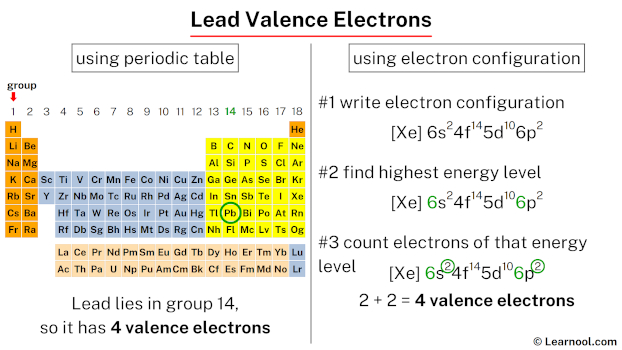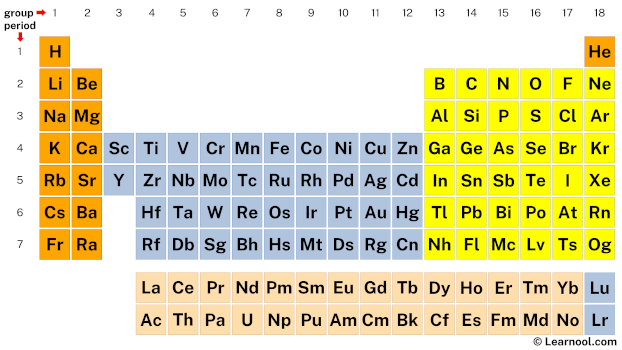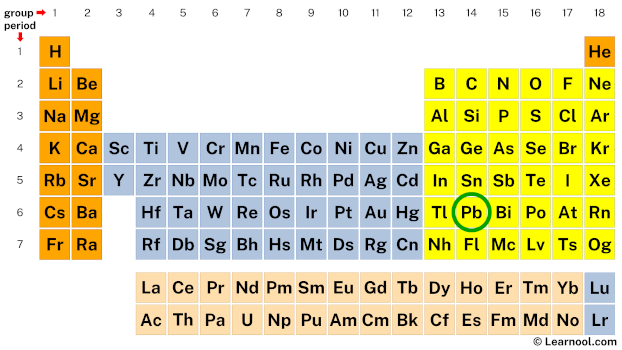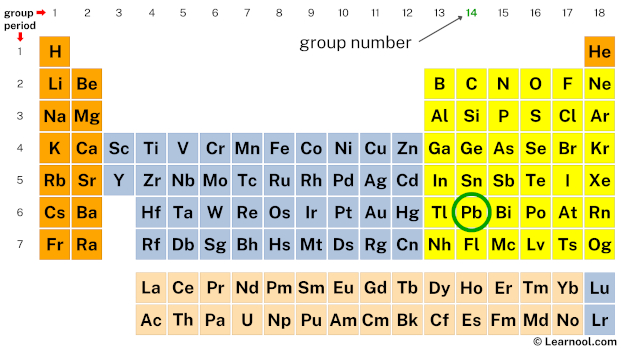
Lead has 4 valence electrons.
Methods
We can write the valence electrons of lead using two different methods:
#1 Using periodic table
#2 Using electron configuration
Let’s break down each method in detail.
Using periodic table

Get the periodic table having the chemical elements marked on it as mentioned above.
Now mark the location of lead on the periodic table.

Next, mark the group number of lead on the periodic table.

The valence electrons of each main-group element can be determined by the column in which it is located.
(i.e., all group 1 elements have 1 valence electron, all group 2 elements have 2 valence electrons, skip the transition metals… then, all group 13 elements have 3 valence electrons, all group 14 elements have 4 valence electrons, and so on up to group 18 elements)
Since lead is in group 14, it has 4 valence electrons.
Using electron configuration
- First, write electron configuration of lead
The electron configuration of lead is [Xe] 6s2 4f14 5d10 6p2.
Learn how to find: Lead electron configuration
- Second, find highest energy level in electron configuration

In the above electron configuration, the highest energy level (6) is marked with green color.
- Finally, count electrons of that energy level

The 6th energy level contains 6s and 6p subshells. There are 2 electrons in the 6s subshell and 2 electrons in the 6p subshell. So lead has a total of 2 + 2 = 4 valence electrons.
Next: Bismuth valence electrons
Related
More topics
- Lead
- Lead Bohr model
- Lead electron configuration
- Lead orbital diagram
- Lead protons neutrons electrons
External links
- https://www.quora.com/What-are-valence-electrons-in-lead
- https://homework.study.com/explanation/how-many-valence-electrons-does-lead-have.html
- https://materials.gelsonluz.com/2019/08/valence-electrons-in-lead-pb-facts.html
- https://alexaanswers.amazon.com/question/7l6hUX295dEthc3McQ5ghZ
Deep
Learnool.com was founded by Deep Rana, who is a mechanical engineer by profession and a blogger by passion. He has a good conceptual knowledge on different educational topics and he provides the same on this website. He loves to learn something new everyday and believes that the best utilization of free time is developing a new skill.
